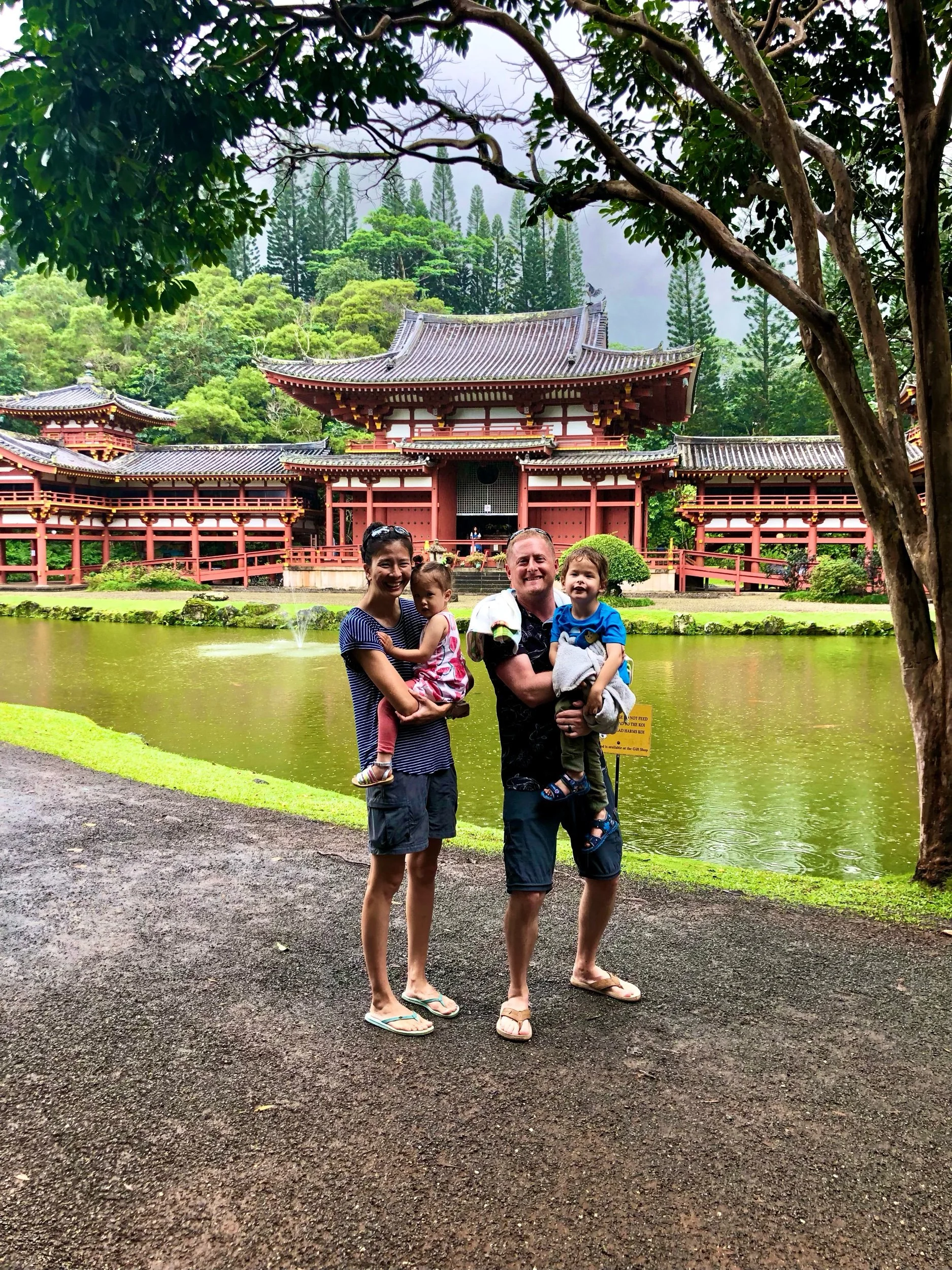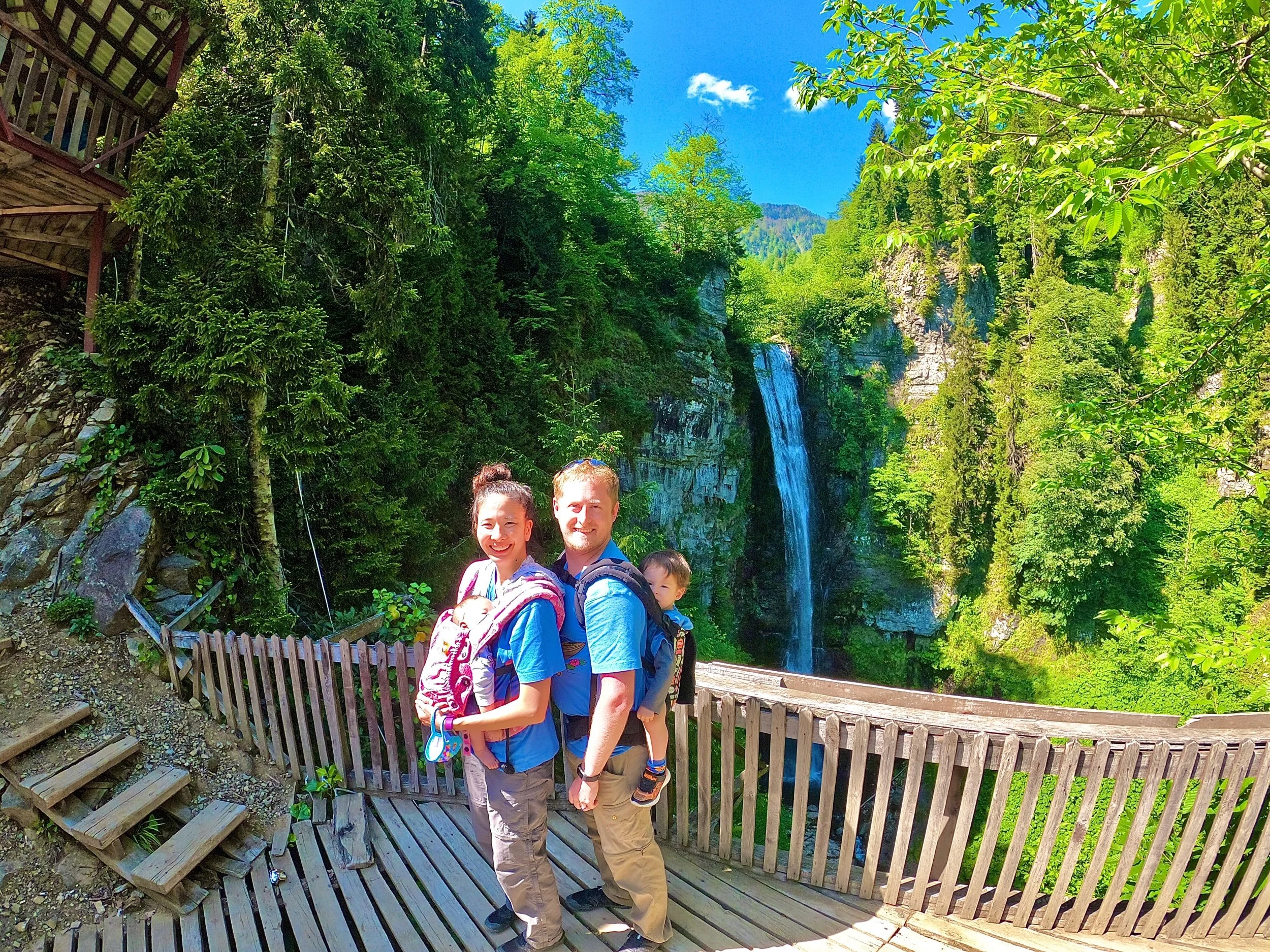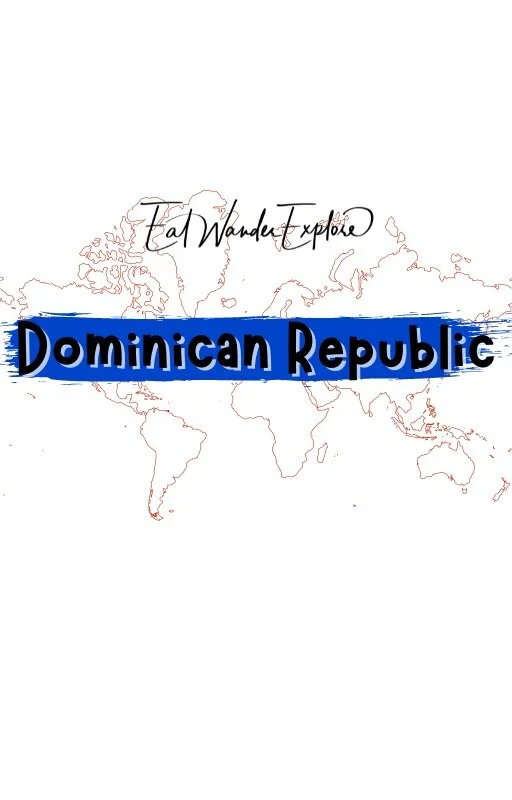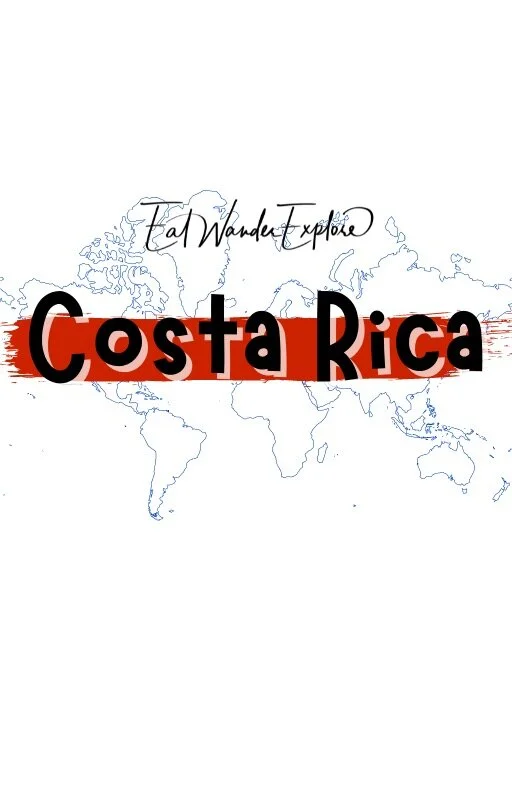Manuel Antonio National Park and Amazing Highlights in the San Jose Area - Costa Rica
Please note: This post may contain affiliate links. See our disclosure to learn more.
Destinations > Latin America > Costa Rica > Manuel Antonio and Highlights in the San Jose Area
Costa Rica is regarded as a tropical paradise for good reason. The beautiful country offers visitors a huge range of natural activities to experience. The rich cultural history of the Central American nation influences their welcoming hospitality and the delicious food and drink found throughout the country from road side stands to formal restaurants. Everywhere you look there is something new to try, a natural wonder to experience up close, a delightful cultural encounter to share.
Learn more about this country, and its customs and culture, by reading the short Culture Smart! book today!
A Bolero statue sits outside the Residence Inn by Marriott in San Jose.
Where to Stay in San José, Costa Rica
If you want to be in the heart of San Jose and within distance to everything in this article, consider staying at the Residence Inn by Marriott. It's a very walkable area with plenty to see nearby, including a few statues by Bolero!
Alternatively, you can use this widget to find a other top-rated accommodations in the area!
National Geographic Journeys: Natural Highlights of Costa Rica
Home to lush rainforests, pristine beaches, and an astonishing diversity of wildlife, Costa Rica has long been a leader in conservation and the protection of natural heritage. Experience this gorgeous Central American nation on a fun-filled adventure, taking you from the foot of an active volcano to the misty highlands and Pacific coast. Hear from a researcher at the National Geographic–supported Monteverde Institute, learn the art of tortilla-making with a local family, and seek out the country’s unique creatures—from blue morpho butterflies to howler monkeys—on hikes through the forest.
Poás Volcano
Located in the forests of the Centra Mountain Range, Poás Volcano is one of the more dramatically awe-inspiring natural wonders of Costa Rica. This active volcano has erupted over 40 times in the modern country’s history, including twice in 2019. These recent eruptions have led to the National Park authorities restricting access to the volcano, but the viewing platform is still open with reservations, and you can take in the incredible views of the world largest active volcanic crater and the lake, Laguna Caliente, or Hot Lagoon. The lake is one of the most acidic in the world, and so it’s really better that you have to view it from a distance. There’s also a lake in a nearby extinct crater, Laguna Botos, surrounded by a lovely cloud forest.
La Paz Waterfall Gardens Nature Park
La Paz Waterfall Gardens Nature Park are another great way to interact Costa Rica’s natural gifts. The incredible cloud forests and waterfalls are draw on their own, though there is a bit of a hike to access the various falls. The Gardens are also the largest animal sanctuary in Costa Rica. The animals that have found a home there have been rescued from all over the country, many of them illegal pets that cannot be released into the wild. The aviary and the butterfly sanctuary are fun if you’re a fan of flying creatures.
Doka Estate coffee plantation
The volcanic history of the country has created an ecosystem uniquely suited to the production of coffee, which has been a primary crop in Costa Rica since the early 1800s. The Doka Estate coffee plantation offers a fascinating look into this historic trade. The planation’s coffee tours give visitors first-hand look at the workings of the country’s oldest Wet Coffee Storage, a process that is still done in the historic manner using waterpower rather than electricity. Stop off in the restaurant either before or after your tour to try some local favorites.
Rio Agrio Waterfalls
The town of Bajos del Toro is known for its nearby waterfalls and one of the more popular in the area is Rio Agrio Waterfalls. The Rio Agrio, or Sour River, is unique for its incredibly acidic pH, due to volcanic activity near its source on the Poás volcano, though it is somewhat diluted by the time it reaches the falls. The trail to the falls is a bit less than half a kilometer, and is well maintained, even though it can be slippery and is steep in spots. The short walk is worth it for the dramatic reveal of the 50 meter-falls. The force has carved out a small pool at the bottom, but the currents and the acidity mean that swimming is not allowed.
DINOLand
At the Rio Agrio Waterfalls site there is another attraction that’s is a great stop if you’re a fan of dinosaurs. DINOLand is home to a variety of life-sized dinosaur replicas that have been animated with movement and sound. With the dinosaurs scattered along a well-maintained gravel path, the experience takes on a lifelike feel in the fantastic rainforest setting. Or rather, you feel like you’re in the middle of a movie, up close and personal with dinosaurs.
Evangelista Blanco Brenes Park
In the Zarcero, one of the highest villages in the Central Highlands, visitors and community members alike are delighted by Evangelista Blanco Brenes Park, sometimes just referred to as Zarcero Park. Located downtown, just in front of St. Rafael the Archangel Church, the park is a wonderland of fantastical topiary sculptures that are over 50 years of work and maintenance by the artist Evangelista Blanco. With simple tools, he has transformed countless cypress trees and bushes into everything from fantastical fairytale scenes to small woodland creatures, to architectural structures like bridges and arches. A visit to this quaint village surrounded by coffee plantations is worth the visit to experience this magical park.
Las Musas
For a bit of water magic, stop by Las Musas, a waterpark just outside of San Ramon. The park has multiple pools, a 3-story waterslide, and a children’s pool. The park is named for the adjacent Las Musas waterfall, located a short walk down a steep, paved path. There are picnic tables and benches both at the swimming pools and at the falls, so you can take a break and just enjoy the day surrounded by water.
Ola Ola Cevichito Casero
There are snacks at the waterpark café, but you might want to save your appetite for a visit to Ola Ola Cevichito Casero, a restaurant in San Ramon that specializes in ceviche and patacones. The atmosphere is welcoming and friendly, the service is great, and the food and cocktails are amazing. The quality of the experience means that it’s a really popular spot with tourists and locals alike, so it’s a good idea to make a reservation in advance, if possible.
Crocodile Bridge
Another popular spot to take in some of the local wildlife is Crocodile Bridge, spanning the Tarcoles River near Costa Rica’s west coast. The river is home to a large population of American crocodiles, many over two meters in length, that like to sun themselves in the span of river under the bridge. The stop has become so popular that walkways have been added to the bridge and souvenir shops and cafés have set up at either end of the bridge to serve the crocodile viewers.
Parque Nacional Carara
On the northern stretch of Costa Rica’s Pacific coast, Parque Nacional Carara is one of the most popular national parks in the country. The Tarcoles River is the northern boundary of the park, and part of the traffic on the Crocodile Bridge is due to buses full of cruise ship passengers and school children on field trips headed to the national park. A big part of the draw is the unique environment of the park on the transitional zone between the rainforest and the tropical dry forests to the northwest that makes it an ideal spot for all sorts of wildlife viewing, but particularly birdwatching. The hiking trails through the park offer options of both short or longer hikes, depending on what you’ve got time or energy for on a particular visit. Despite the popularity, the park doesn’t feel crowded.
Rescate Wildlife Rescue Center
A visit to Rescate Wildlife Rescue Center is another must for anyone who loves animals. The sanctuary rescues and rehabilitates wildlife with the goal of returning them to the wild whenever possible. The natural settings of the center create an animal-centered experience that is a clear representation of their mission to protect and restore the country’s biodiversity. There are weekday tours that guide you through the animals, sharing stories of how they came to be there and where they are in the process of rehabilitation. The center and sanctuary have a variety of tour options, so it’s a good idea to check them out and see what’s available during your visit.
Parque Nacional Manuel Antonio
If you’re looking a spot with a wide range of the options that Costa Rica offers visitors all in one place, Parque Nacional Manuel Antonio has what you want. Located on the central Pacific coastline, the park offers the both extreme adventures and relaxing interludes on land and at sea – take an extreme hike through the rainforest or snorkel the fabulous coral reefs, wiz along a canopy zipline or lounge on the white sand beach. There are multiple options for interacting with the flora and fauna, as well. You could take a guided rainforest tour, kayak through the mangroves, or head out to spot dolphins on a catamaran. Open daily, except on Tuesdays, the park’s hours are 7am to 4pm, and you’ll need to purchase tickets online in advance.
El Mestizo Mercado Gastronomico
If you’re looking for adventures of the culinary variety, a visit to El Mestizo Mercado Gastronomico, located between San Jose and San Rafael in Plaza Tempo, is not to be missed. El Mestizo is a gastronomic market, the first of its kind in the country. The public food market has a variety of different food and drink stalls, all gourmet quality, lining a central open-air eating area. You can choose a cuisine to suit your mood from their range of international and local options, and know you won’t be disappointed in the quality, or try several options if you’re looking for a little more variety.
National Theater
Opened to the public in 1897, the National Theater in San Jose is a cultural center and a deserved point of pride for Costa Ricans. The neo-classical building features monuments to great composers and playwrights, as well as gorgeous mural inside, Allegory of Coffee and Bananas, highlighting the history of the local agriculture that made the construction possible. Home to the National Symphonic Orchestra, the theatre hosts several performances a week, showcasing local and international artists and composers. Even if a performance doesn’t fit into your time or budget, we recommend stopping by for a self-guided tour of the incredible architecture and paintings, and if you come around lunch time there are often free performances.
Costa Rican Center of Science and Culture
Located in an impressive fortress, once the central penitentiary, the Costa Rican Center of Science and Culture is home to a number of culturally significant institutions, including the Children's Museum. Established in 1994, the center’s mission centers around strengthening education and promoting scientific and technological development. One of the key ways this mission is followed is the interactive Children’s Museum, with over 40 exhibits that take you on adventures through everything from the universe to the human body to the culture and history of the region. The center is often host to special events, as well, so be sure to see what’s going on while you’re there. The small entrance fee and central location make this a great addition to any Costa Rican visit.
Enjoy Costa Rica
Whether you have a delicious ceviche on the beach or a morning cup of coffee overlooking the highland plantations, Costa Rica has a great experience around every corner. Big cats, crocodiles, and rare birds will add special moments to your visit, and the warmth of the culture and the people will make you want to stay forever. Costa Rica’s magic is waiting for you to come across your next adventure.
Learn more about this country, and its customs and culture, by reading the short Culture Smart! book today!
FAQs
How much does it cost to enter Manuel Antonio National Park and what are the opening hours?
The Manuel Antonio National Park entrance fee is $18.08 USD + tax for adult foreigners, $5.65 USD + tax for kids 2-12 years old, free for kids under 2. Cash and credit card are accepted. The park is open for the public from Tuesday to Sunday, from 7 am until 4 pm. The park is closed on Mondays and some holidays.
What are the best places to stay near Manuel Antonio National Park and how to get there from San Jose?
There are many hotels and resorts near Manuel Antonio National Park, ranging from budget to luxury. Some of the top-rated ones are Hotel La Mariposa, a luxury hotel with gorgeous views, Hotel San Bada, a family-friendly hotel next to the park entrance, and Selina Manuel Antonio, a hostel with a lively atmosphere. To get to Manuel Antonio from San Jose, you can take a bus, a shuttle, a taxi, or a rental car. The bus takes about 4 hours and costs around $10 USD per person. The shuttle takes about 3 hours and costs around $50 USD per person. The taxi takes about 2.5 hours and costs around $180 USD per trip. The rental car takes about 2.5 hours and costs around $40 USD per day plus gas and tolls.
What are some other activities or attractions to do in the San Jose area besides visiting the park?
San Jose is the capital and largest city of Costa Rica, and it offers many cultural and historical attractions, as well as natural and adventure activities. Some of the best things to do in San Jose are:
- Visit the museums, such as the National Museum, the Gold Museum, the Jade Museum, and the Children's Museum.
- See a show at the National Theater, a beautiful neoclassical building that hosts performances of opera, ballet, music, and theater.
- Explore the markets, such as the Central Market, the Artisan Market, and the San Pedro Square Market, where you can find local products, souvenirs, and food.
- Enjoy the nightlife, such as the Bar Crawl Tour, the San Jose By Night Tour, or the clubs and bars in the SoFA district.
- Experience the nature, such as the San Jose Walking Nature Tour, the Silicon Valley Tech Tours, or the day trips to nearby attractions like Yosemite National Park, Big Sur, Monterey, or California's Great America.
Thank you VERY much for reading our article. We actually created this website to help people reach financial independence. Did you know that by having a remote job and traveling endlessly, or living in a country that has low costs of living, you can actually reach retirement quicker? Plus, retirement abroad is up to 75 percent cheaper as well! Learn more by exploring our website: EatWanderExplore and REmotiFIRE.
See our Thank You page to sign up for our free weekly newsletter - you’ll receive only 1 email per week letting you know about our latest travel articles, remote-work life, and amazingly affordable destinations!
Found this post useful? Buy us a coffee to help support this site’s running costs OR share this article with a friend.






























































